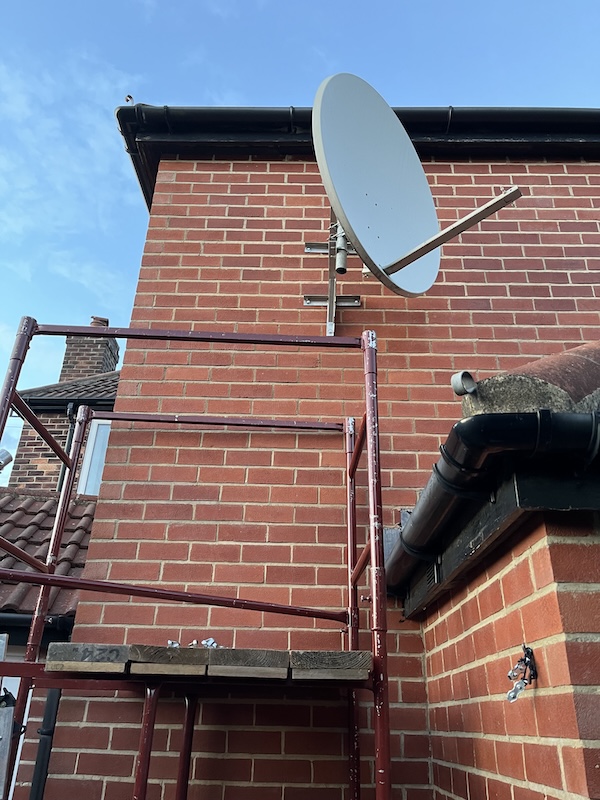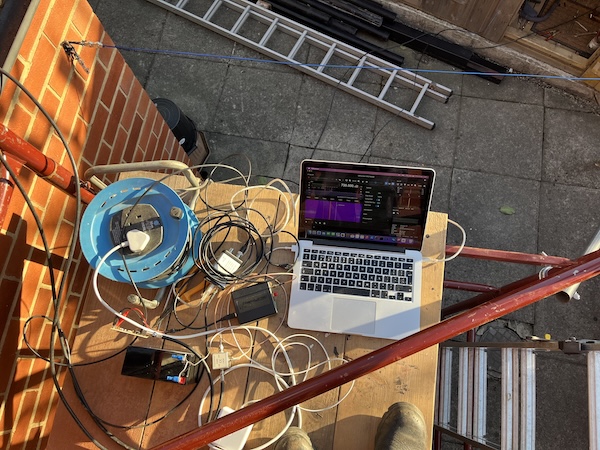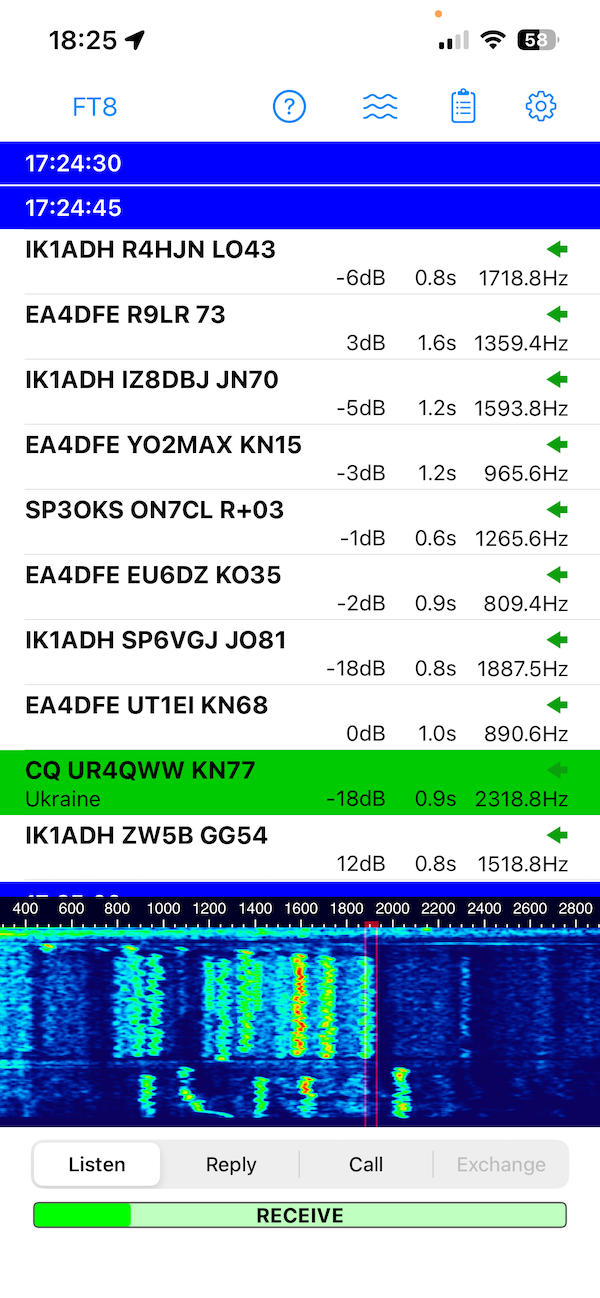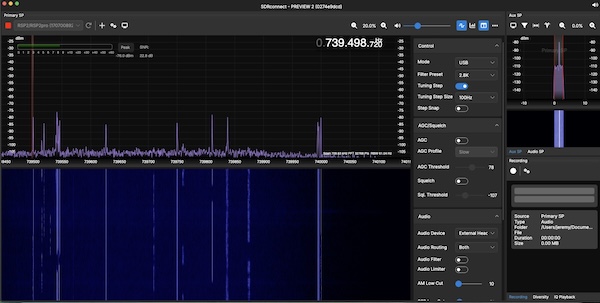QO100 part 1
Finally I had a chance to set up the QO100 dish on the side of the house. It was originally behind the harage at ground level which was not ideal as it was both a head-hitting hazard and an RF hazard, especially as I eventually want to be able to send not only SSB but also DATV which requires a higher power output than the 4W I had originally. I also wanted to copy the special GB2RS broadcast on QO100 which was scheduled for the 28th September, 2025.

So, out with the scaffolding and up with the dish. That was the easy part. The disk elevation was already set so all I needed to do was point it in the right direction azimuth-wise. I nearly got that right using a theodolite app on the phone so with the aid of all relevant hardware I tuned it to max, for now anyway. It was rather amusing to have to set up a laptop and power supplies on the scaffolding as the last time I did that was at ground level.

Cables came next - three runs of RG59, each around 12 metres back to the shack. These were very fiddly but worse was to come! Once I had the runs of RG59 terminated I ran a length of LDF4-50A for the transmit path (not shown and not yet connected). That was hard as our loft is on two levels and not entirely boarded and I was having to unroll the cable in one part of the loft, push it to the other part, and finally out to the dish. That was three ladders and a lot of careful moving about in the loft, made worse by the fact that a roll of LDF4-50A cable that has soent its life rolled up really does not want to go out straight!
The receive setup for the NB transponder consists of the dish and LNB, a Leo Bodnar dual output GPSDO, a square to sinewave converter both of which feed the 25MHz local oscillator frequency to the LNB, a bias tee powered from the shack PSU (for now) which powers the LNB, a SDRPlay RSP2 SDR as receiver and SDRConnect running on the Mac. Finally I had everything in place, I mounted the LNB and powered everything up. And found the beacon.
But there was a regular fluctuation in frequency resulting in the beacon tone being very warbly. I put that down to the fact that everything was speard across the bench but no amount of screening helped. The GPSDO was giving a good steady 10MHz and 25MHz output but feeding this into a 'scope releaved in all I can describe as a slight furryness. The 'scope showed 25MHz without variation though. At that time I remmbered tat when I alighed the dish I made a short recording and the same effect was present there, so was it the LNB? Feeding 25MHz from a function generator cured the issue but as the generator is not frequency locked it drifted badly. However, it did point the finger at either the GPSDO or the wave converter.
Putting the wave converter in a screened box made no difference. So I swapped the dual output GPSDO for a single output one and that cured the issue and gave a nice clear beacon tone. To prove it I tuned to the FT8 frequency and using iFTx on the iPhone - which is very sensitive especially as I was just holding the phone near the speakers - and decoded FT8. I had tried this before with the warbly issue and it would not decode at all.

Back to the dual output GPSDO. After experimenting ot appears that while it will reliably generate outputs at 10MHz and 25MHz the output fluctuates and causes the issue. I tried various recipes and all failed. Setting both outputs to 25MHz result in a clear tone. So, for now I will use the mini GPSDO for the 25MHz local oscillator frequency and the dual output one for the 10MHz which will be for the transverter for the transmitter side of things.

Part 2 will be about the wideband transponder and DATV.